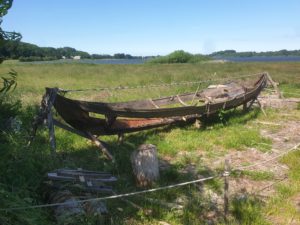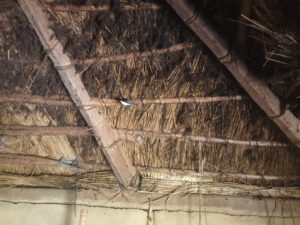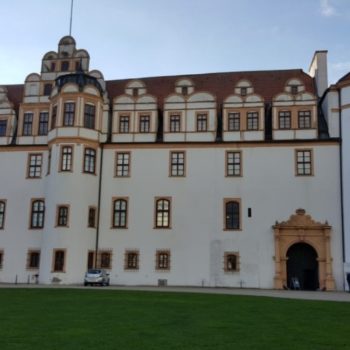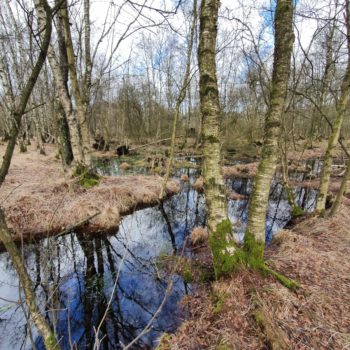The weather was a little murky when we arose on sunday morning. But considering that thunderstorms and incessant rain had been forecast, it didn’t look too bad. And at least it wasn’t raining. So we decided to take a chance, and set off on our journey.
Our choice, which was very short notice of course, due to the expected conditions, fell on Haithabu, the site of an old viking village situated on the Haddebyer Noor, which opens into the river Schlei, which in turn has its estuary in the Baltic Sea. This is now part of Northern Germany, but at its height in the 10th century, this area was still part of Denmark.
In its day, it seems that Haithabu was an important hub for trade and shipment between Scandinavia, Western Europe as well as the Baltic. It was destroyed in 1066.
All that remains today, is the Viking museum and a reconstructed village. The archeological site was inscribed on the world heritage list in 2018.
From our position north west of Hamburg it is a journey of round about 75 miles, almost all which is on the German Autobahn. so were talking about a ride of approximately one hour.

Access is via a narrow road through the town of Busdorf. At the end of this road there are a number of free parking spots. Yesterday was easy enough, but they are limited, and in summer it could get fairly crowded. We arrived, surprisingly, to brilliant sunshine.
Leaving the car, we made our way to the museum by crossing the embankment to the south of the settlement, this gives a wonderful view over the Haddebyr Noor.
Turning left up towards the museum the path leads through a small wood. A feature of this place are the many hornbeams with their gnarled and elevated roots offering sanctuary to any creature, or indeed human, in need of it.
 The museum itself is situated between the woods and the waters of the lake. It is not huge, and concentrates mainly on findings from the area. The two big features of the museum are the rune stones and a viking ship, which has been partly restored, still has some original planks on the hull however.
The museum itself is situated between the woods and the waters of the lake. It is not huge, and concentrates mainly on findings from the area. The two big features of the museum are the rune stones and a viking ship, which has been partly restored, still has some original planks on the hull however.
The Skarthistone (picutred) was found in 1857 south of the excavation site and bears the inscription in old Dänish
“King Sven set down this stone in remembrance of Skarthi, his liegeman, who had travelled West, but now fell at Haithabu”

The second stone, the Erikstone, appears to be of roughly the same age – both dating back to the early 11th century – and have similar content. This stone also was erected in memory of a fallen liegeman
All in all the museum itself is not spectacular, but certainly worth a visit, and 8 Euros to get in is very reasonable, especially considering the fact that the tickets are also valid for the reconstructed village.
The village is around 1 1/2 miles south of the museum, and another very pleasant walk down a path past fields where Galloway cattle graze. These are supposed to represent the cattle that would have grazed here in the past. Galloway were chosen due to the similarity in height to the cattle of the Vikings.
The village has been reconstructed in some detail. Although it is not big, it is extremely interesting. 5 thatched buildings from different trades have been reconstructed. The details in the houses are amazing and give an interesting insight into the lives of the people who inhabited theses villages.
A viking boat
Swallows inhabite the thatched roofs
A living quarter with beds
A viking boat
A mooring on the Noor
Photos: Own work and © Selina Jean Scott
Further literature: https://en.wikipedia.org/wiki/Hedeby









